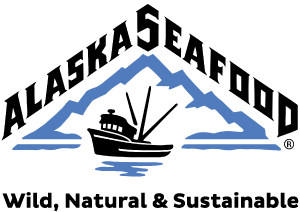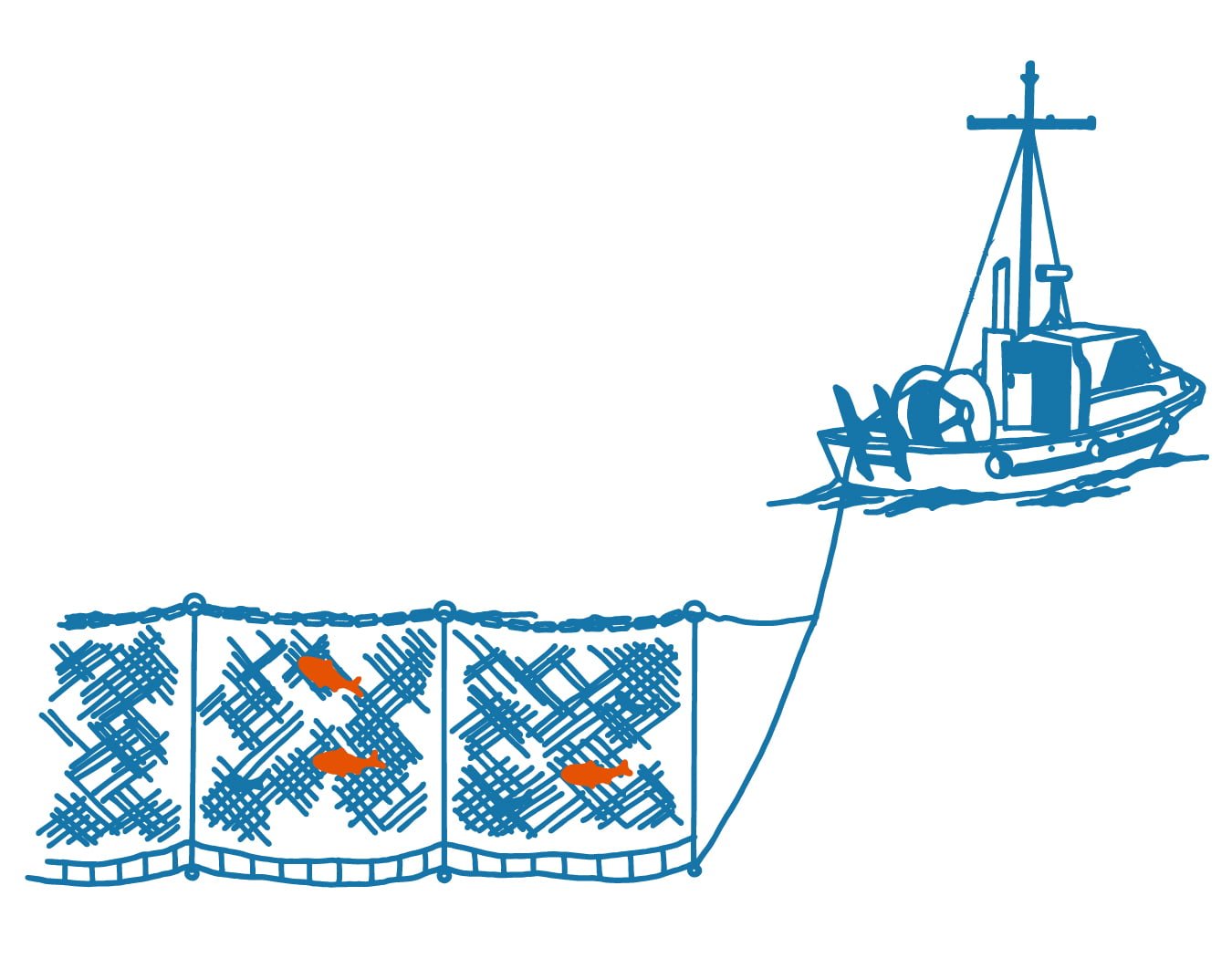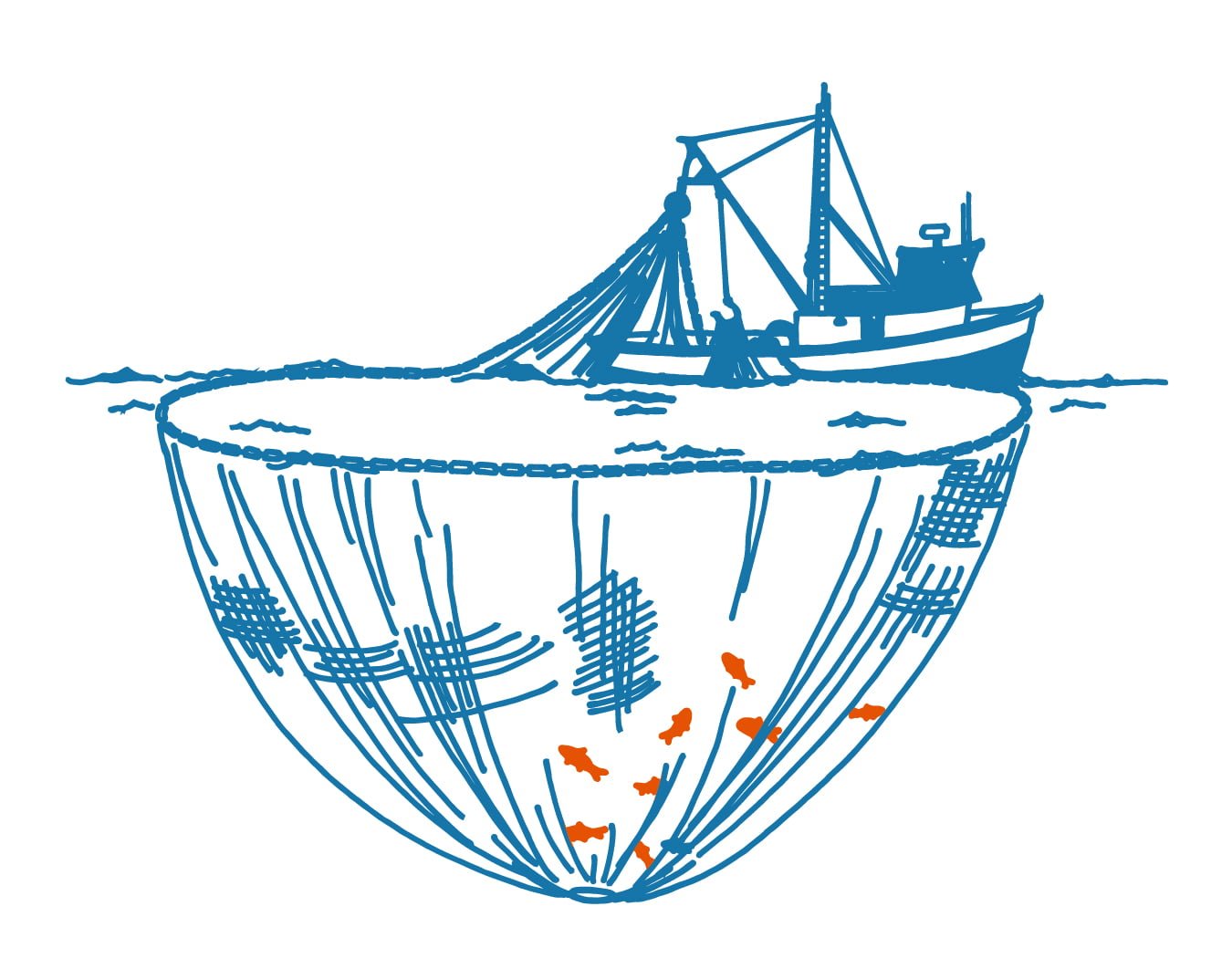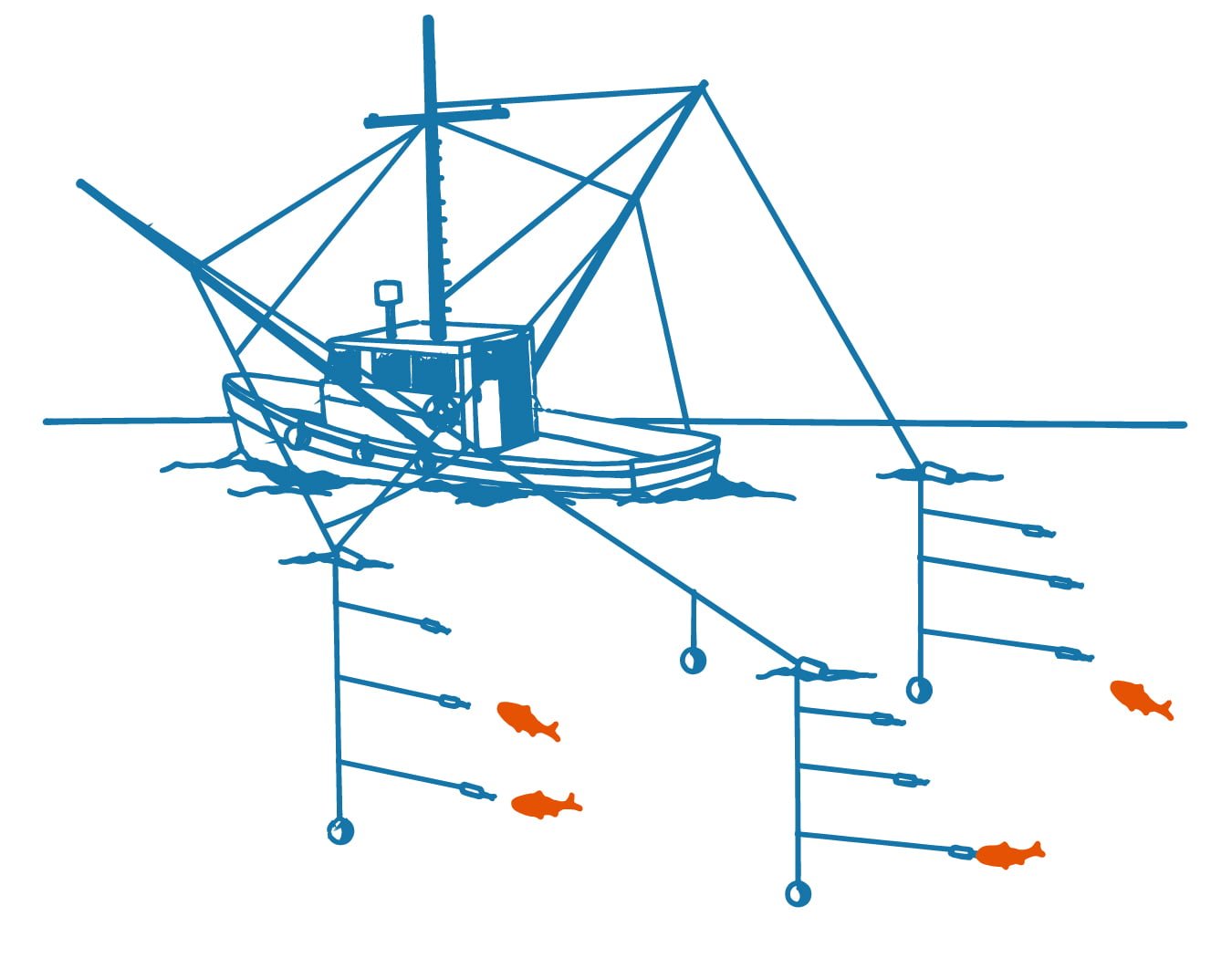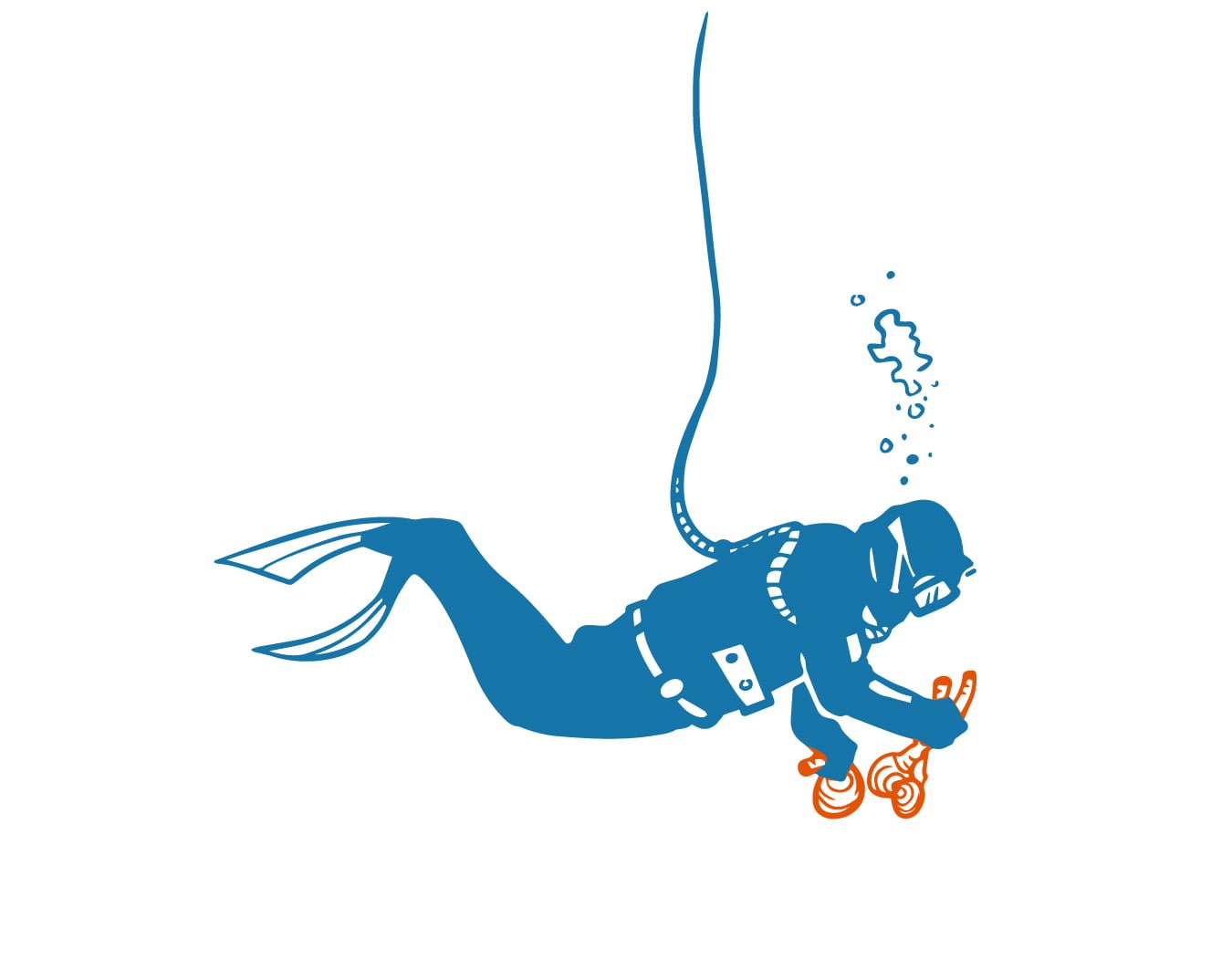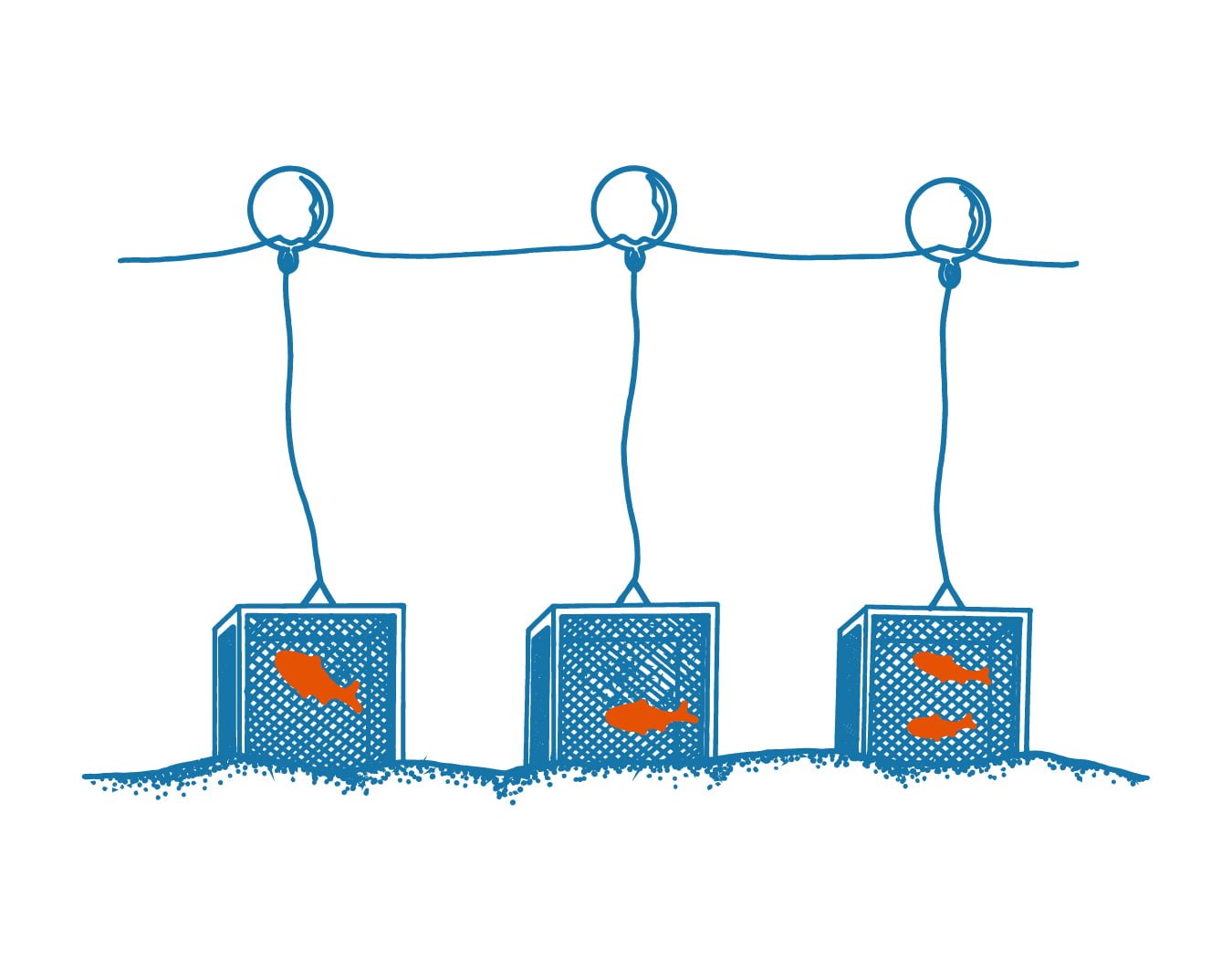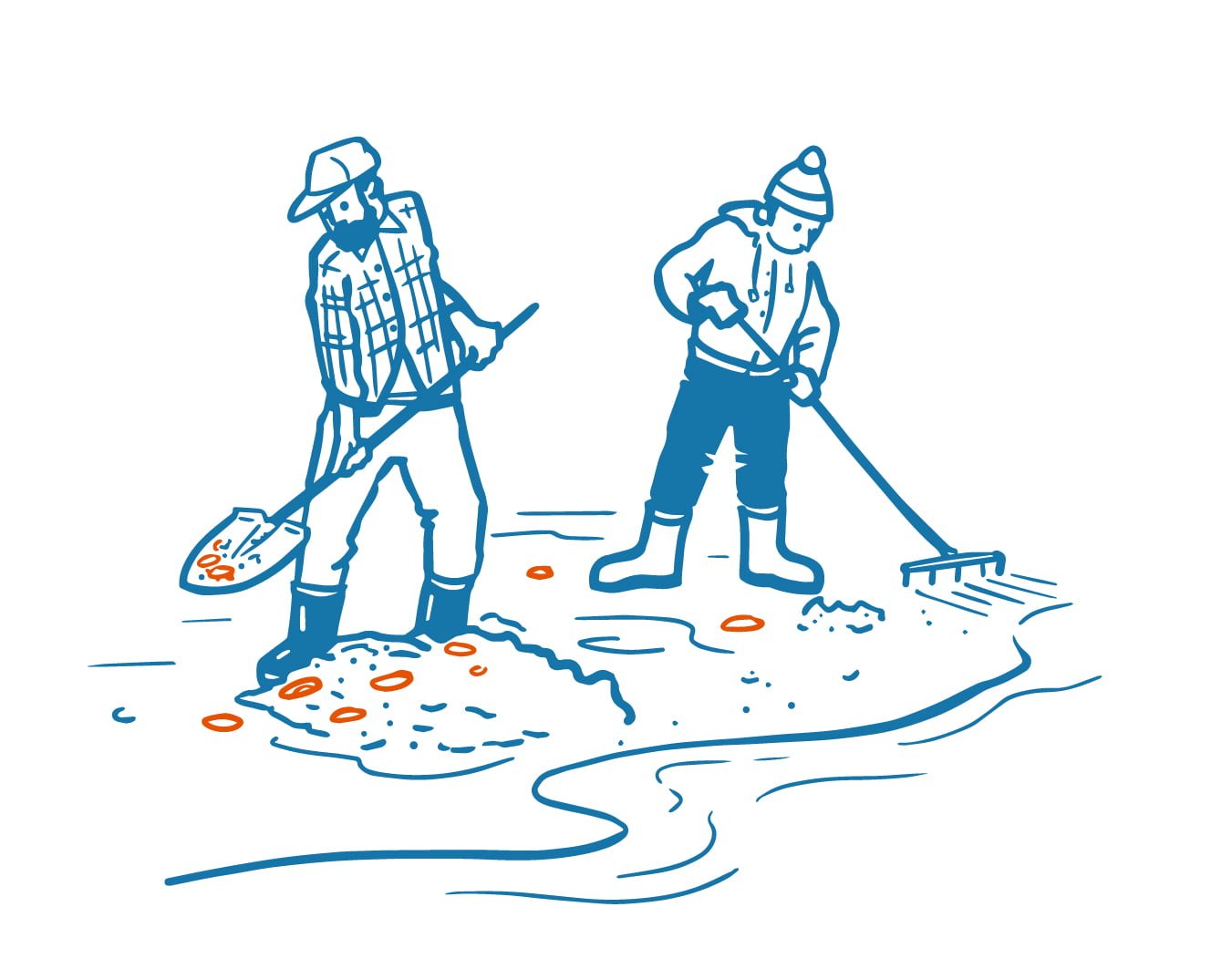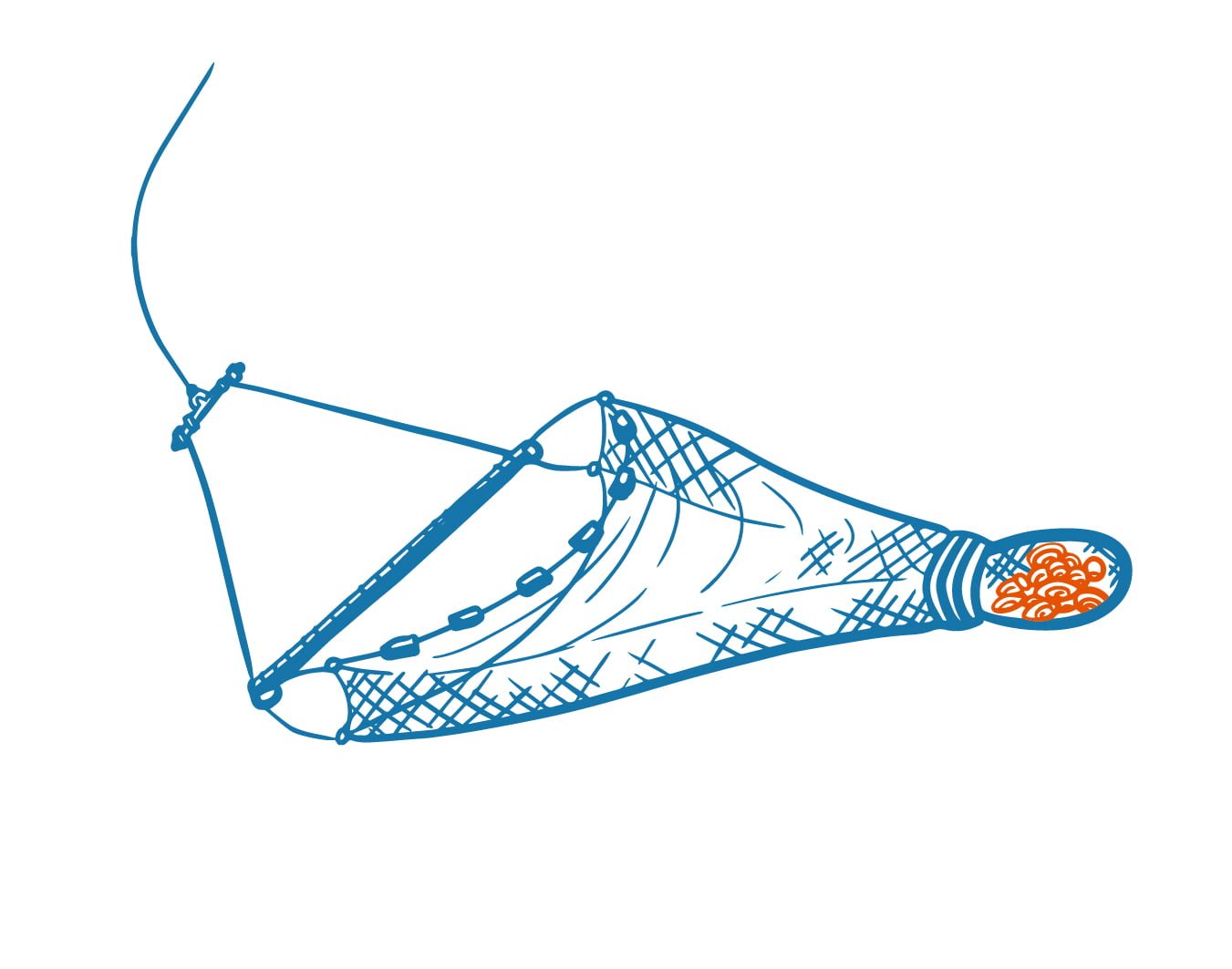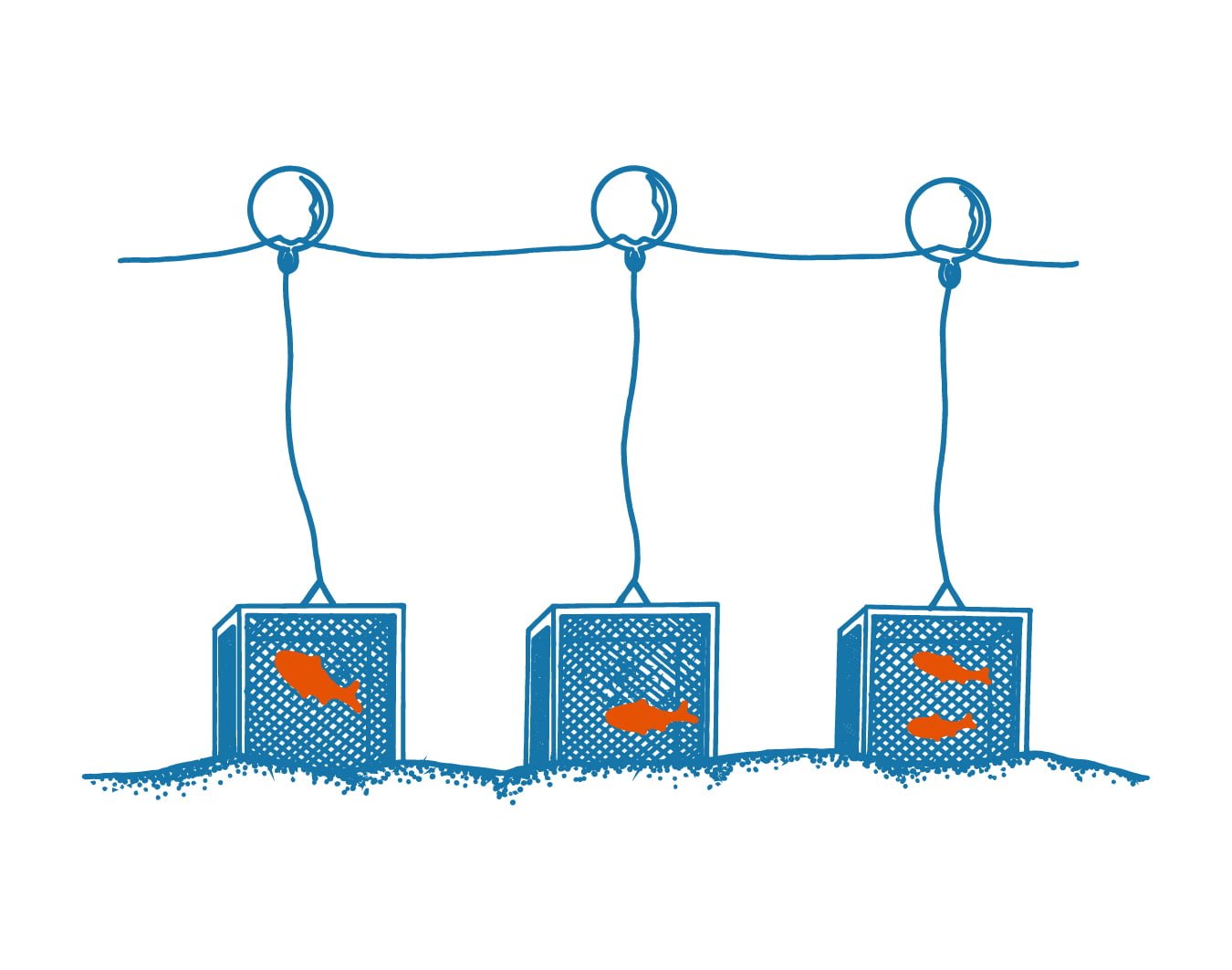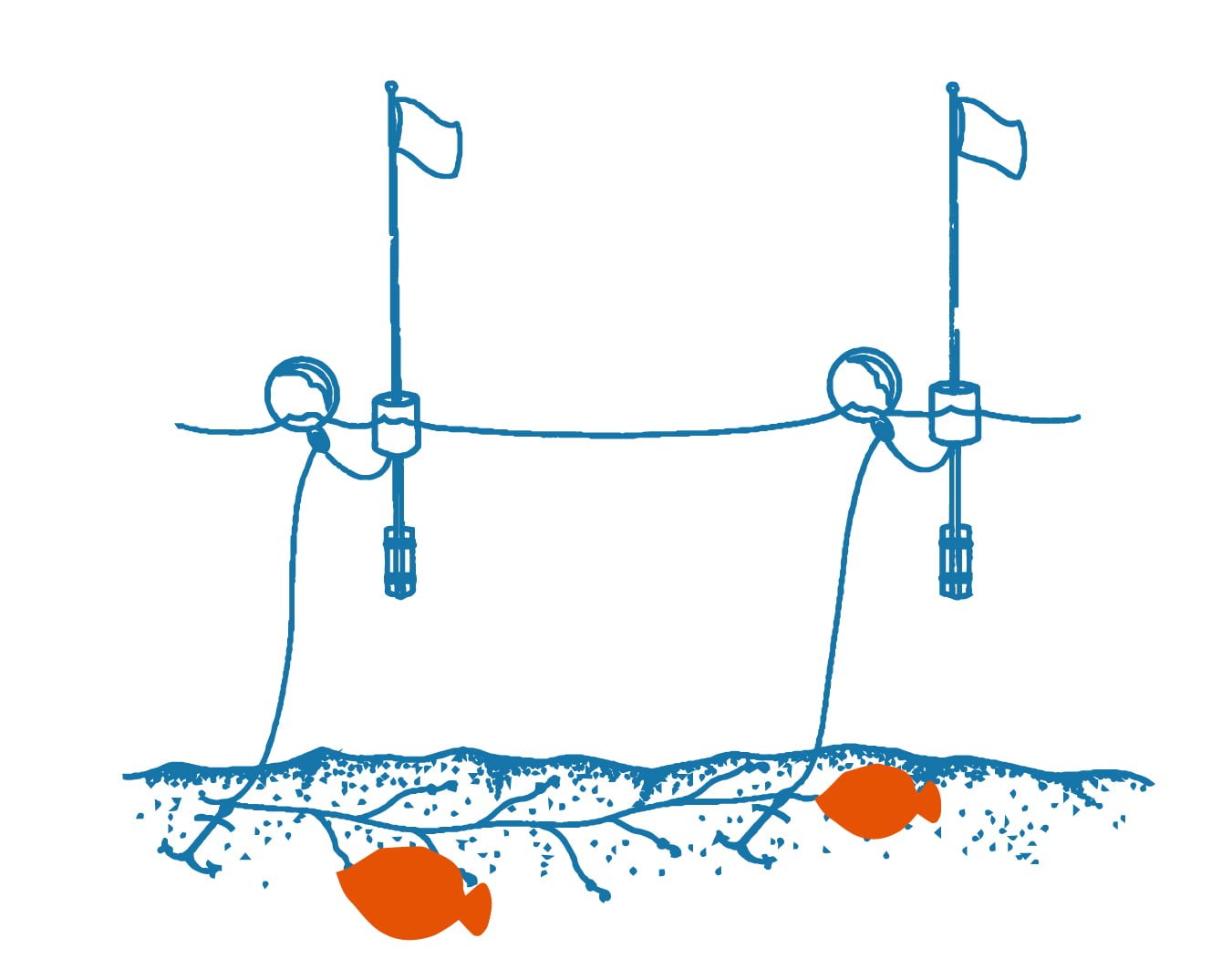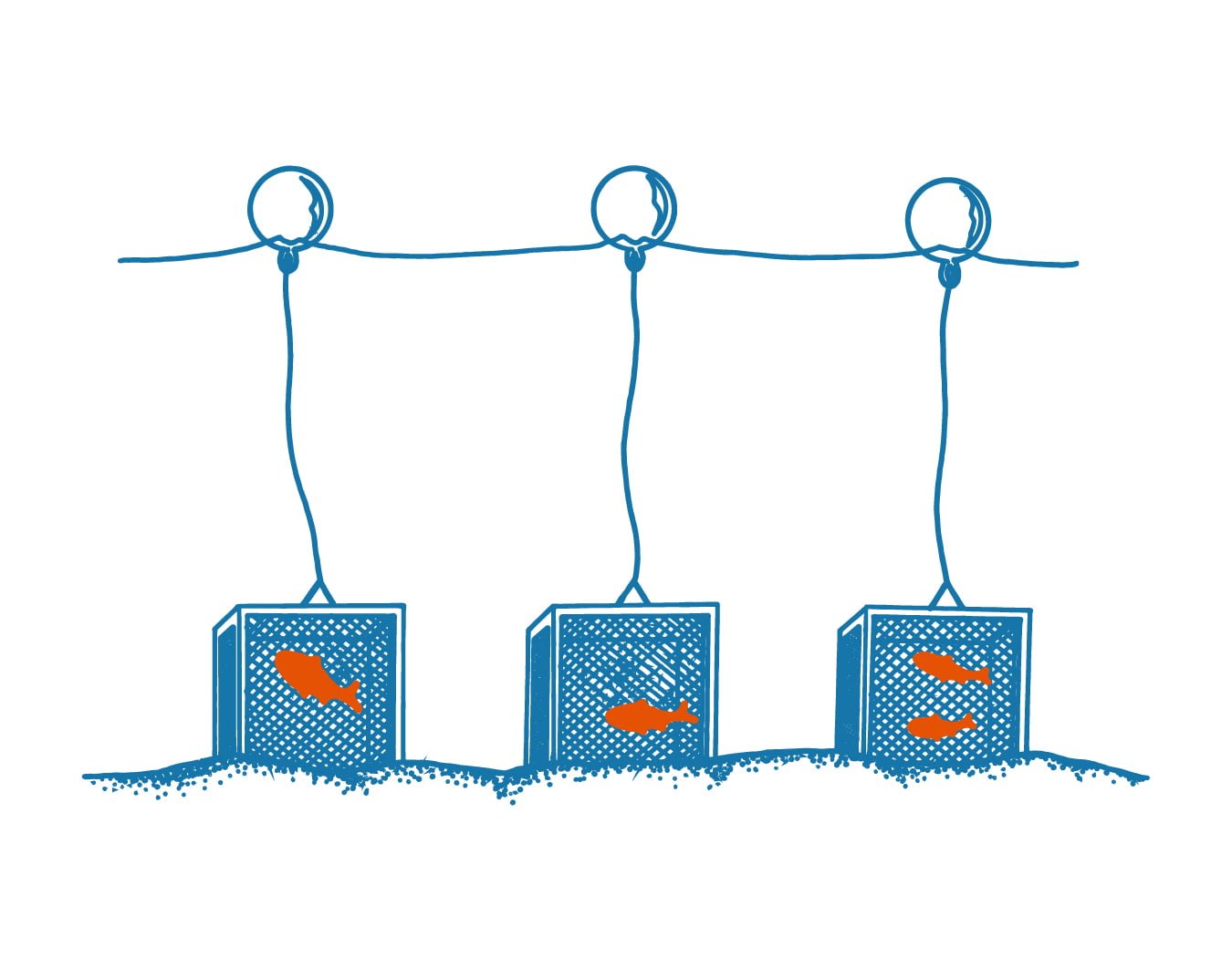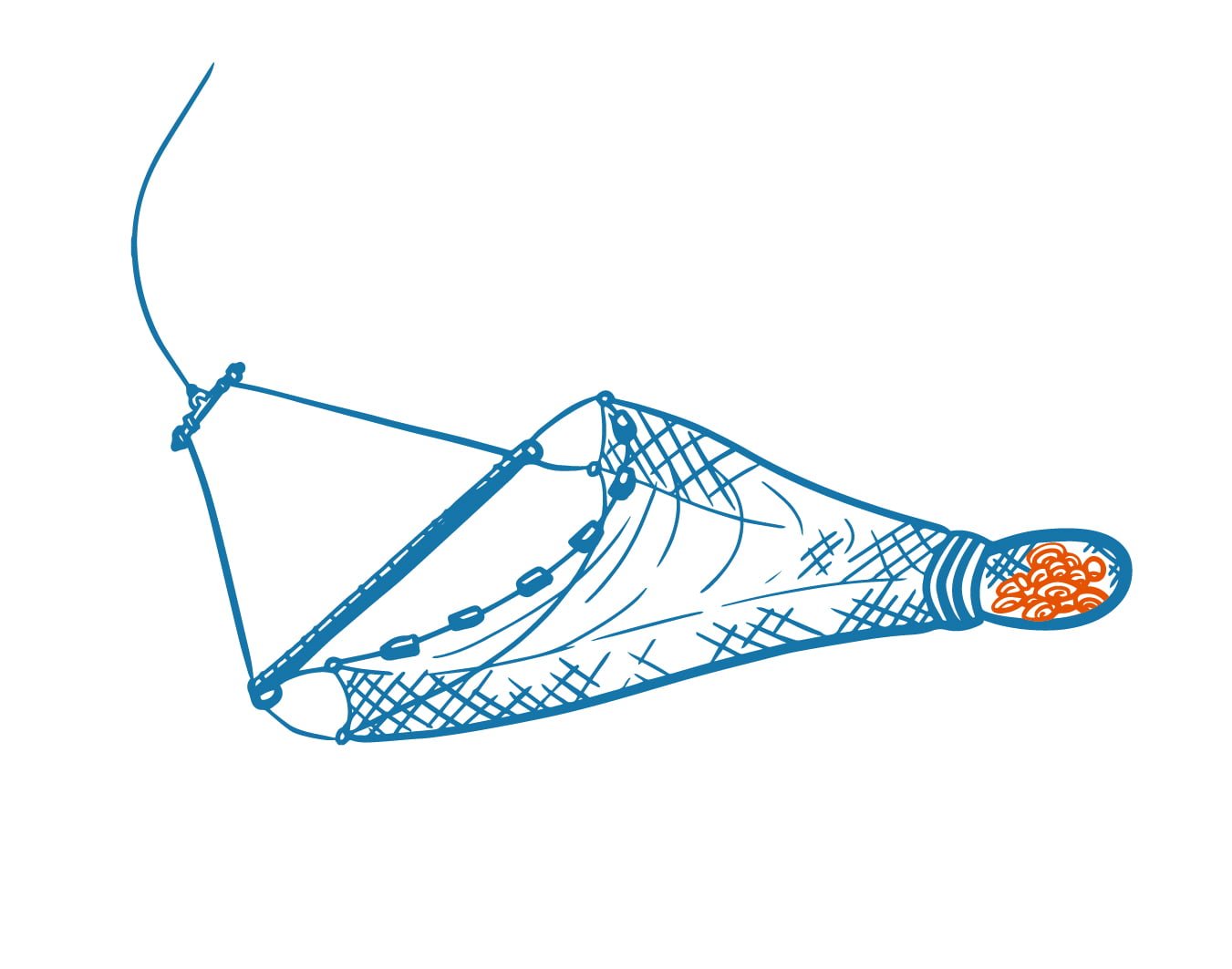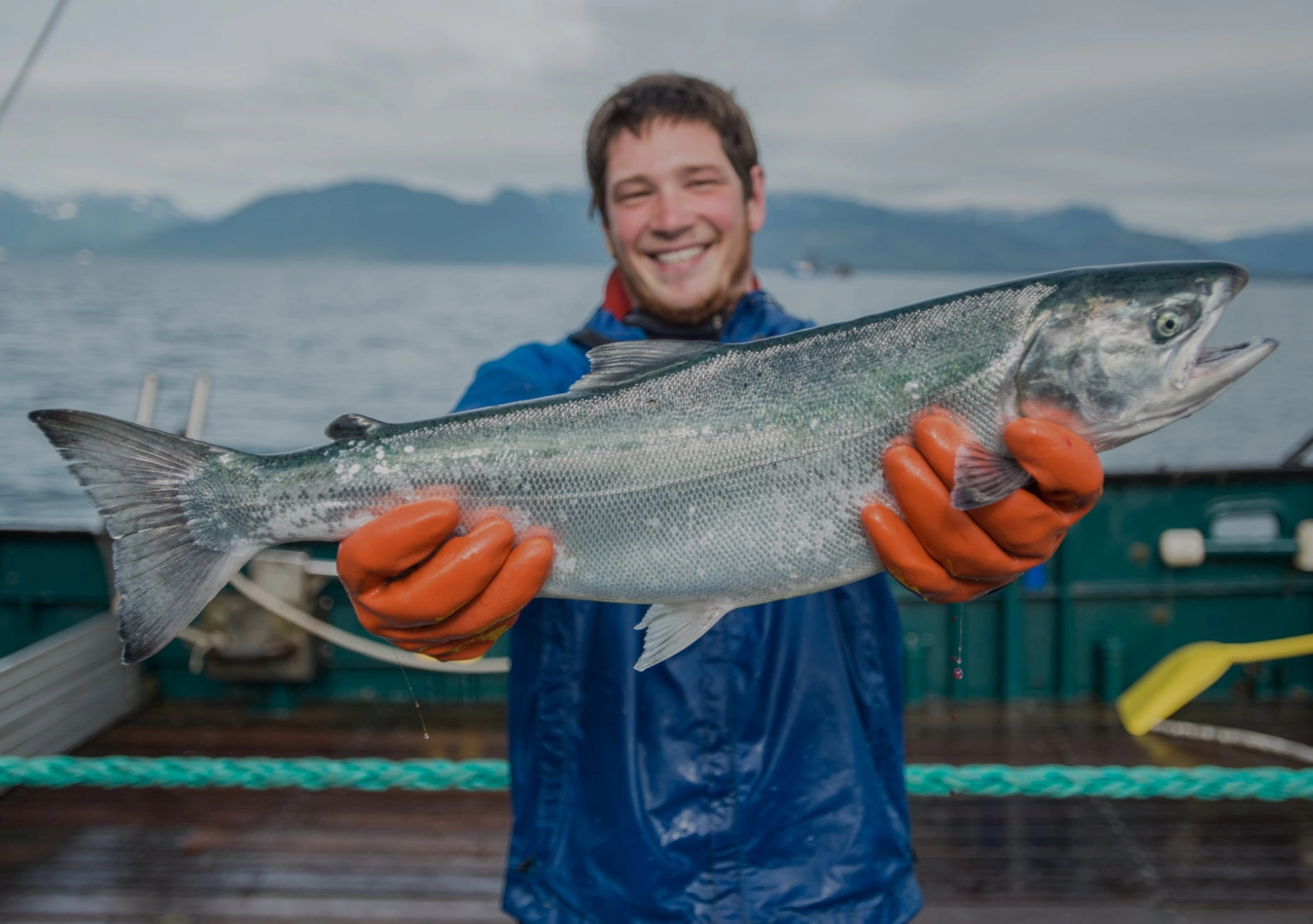
Seafood for All Seasons
Alaska’s harvesting areas support some of the most productive fisheries in the world.
Alaska seafood is harvested seasonally and available frozen, smoked and canned year round. Most Alaska seafood is flash frozen directly after harvest to maintain the highest quality, and maximize purity and taste.
Harvesting Alaska Salmon
Salmon Harvesting Season
Harvesters cooperate with researchers and managers to develop allocation and regulations methods for different gear types, fishing areas and fishing times to sustainably harvest salmon in Alaska.
- The five species of Alaska salmon are harvested primarily between May through September
- Wild Alaska king salmon makes the exception and is harvested nearly year-round
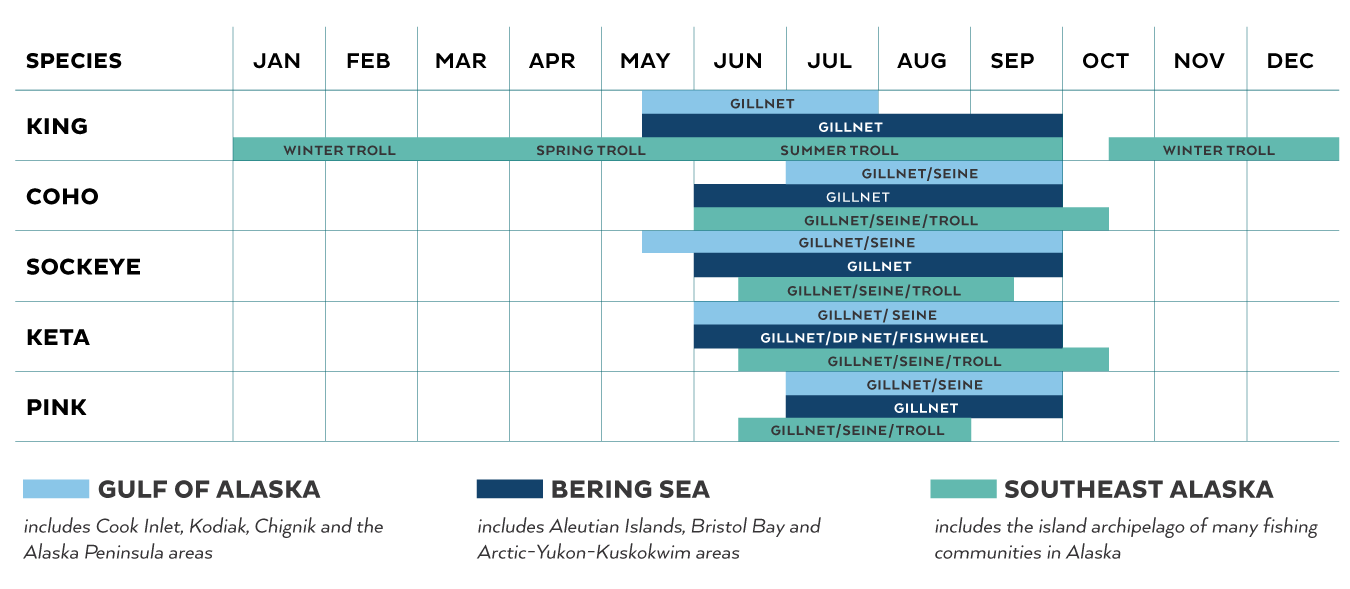
Exclusive Economic Zone
All fish harvested from Alaska are caught within the Exclusive Economic Zone, an area outlined by the United Nations Convention on the Law of the Sea:
- 3-200 nautical miles offshore (light blue shading) – the state has rights in regards to the exploration and the use of marine resources
- Up to 3 nautical miles offshore (orange outline) – Alaska’s salmon are harvested from areas relatively close to the coastline in this regional fishing area designated and managed by the state of Alaska
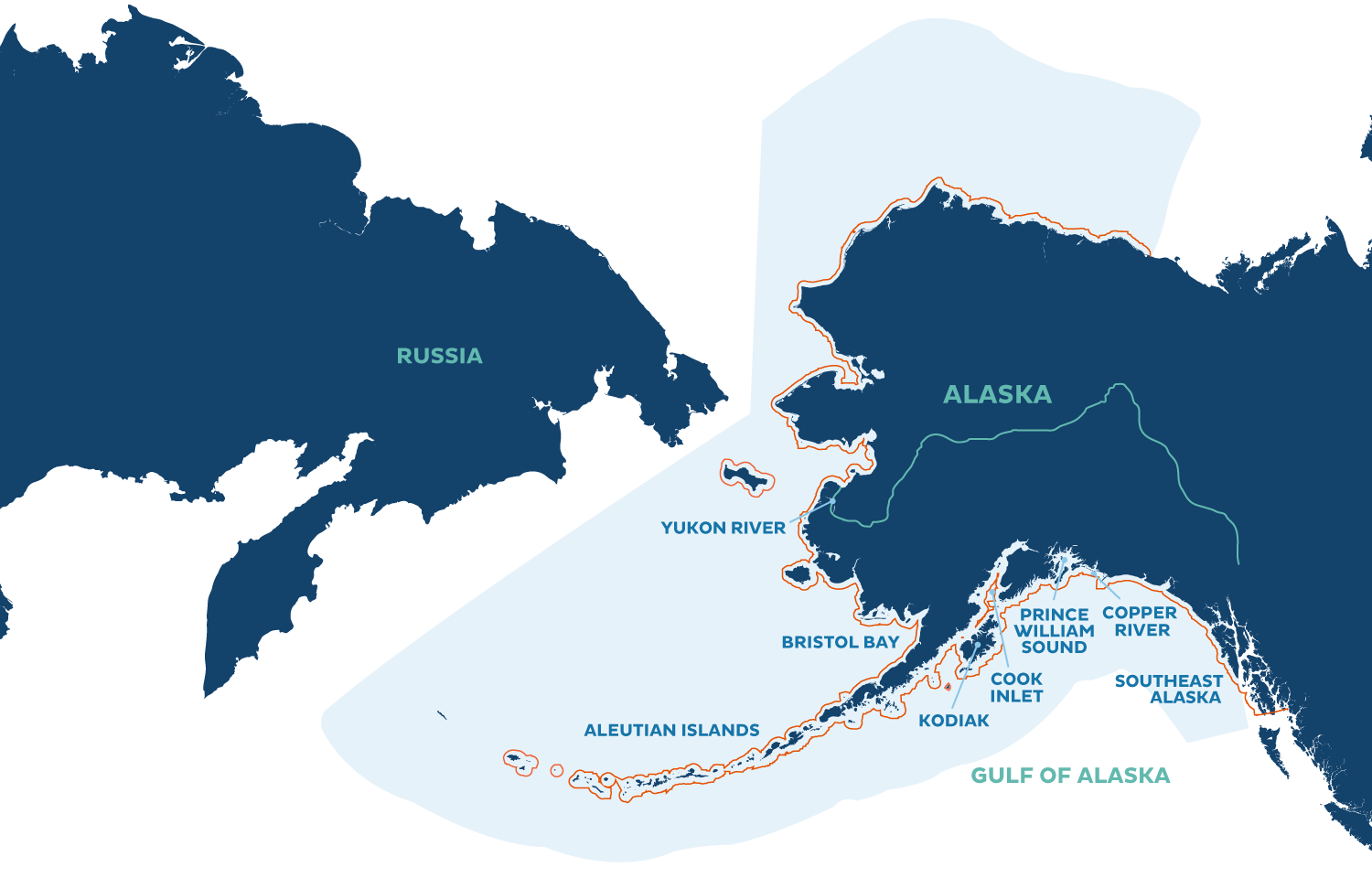
Salmon Harvesting Methods
All fishing gear used by Alaskan harvesters is specific to species behavior and fishery location.
- Salmon school tightly, not mixing very much with other species of fishes, so commercial salmon fishing has virtually no incidental catch of non-salmon species.
- The three types of commercial harvesting methods for salmon include gillnetting, purse-seining and trolling.
Harvesting Alaska Shellfish
Shellfish Harvesting Season
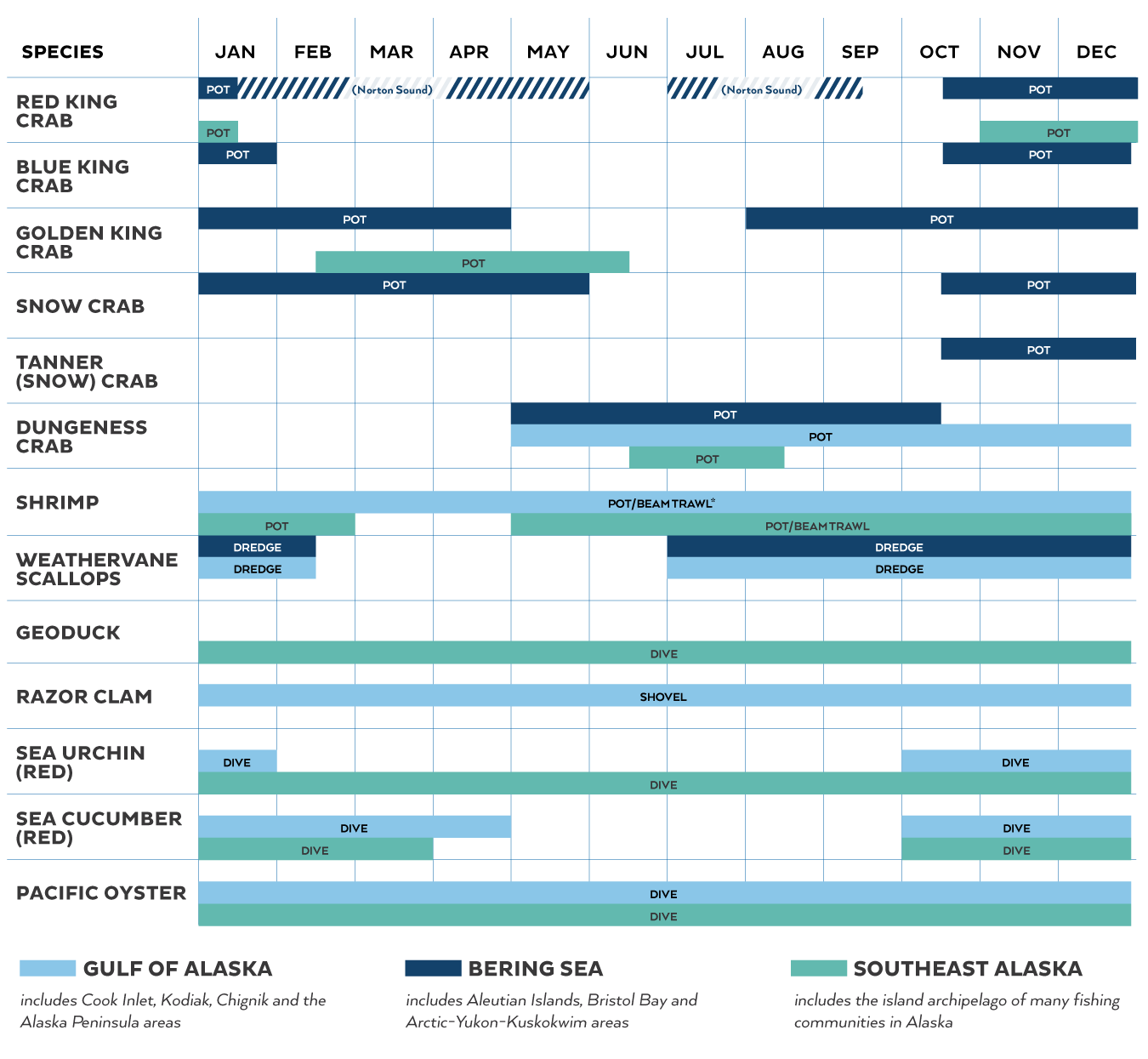
Exclusive Economic Zone
All fish harvested from Alaska are caught within the Exclusive Economic Zone, an area outlined by the United Nations Convention on the Law of the Sea:
- 3-200 nautical miles offshore (light blue shading) – the state has rights in regards to the exploration and the use of marine resources
- Up to 3 nautical miles offshore (orange outline) – Alaska’s salmon are harvested from areas relatively close to the coastline in this regional fishing area designated and managed by the state of Alaska
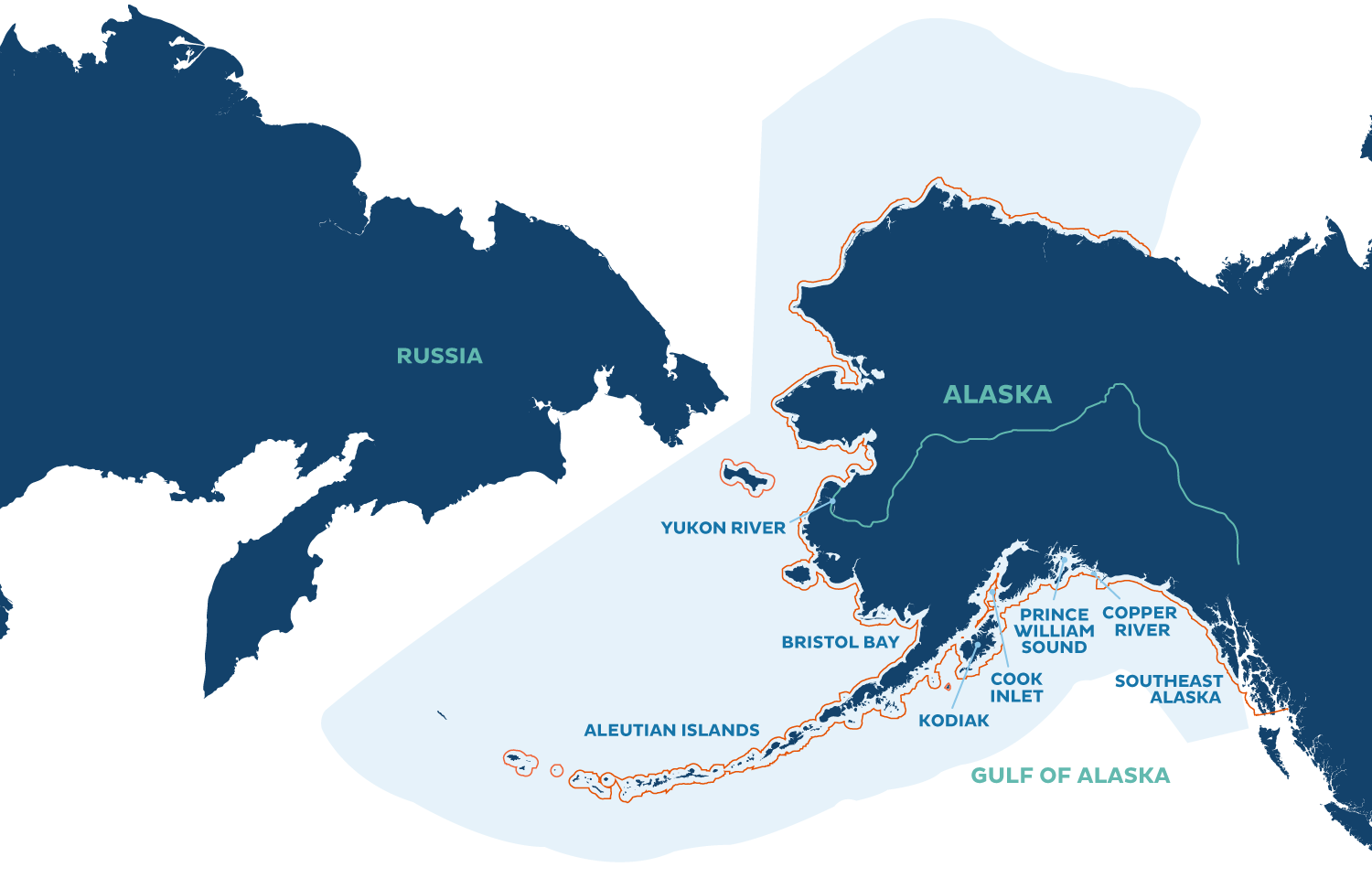
Shellfish Harvesting Methods
Alaska shellfish harvesters are dedicated to responsible catch methods and have participated in scientific studies to avoid incidental catch of non-target species.
- Harvesters cooperate with researchers to develop modified gear and harvesting techniques that reduce bycatch, improve quality and preserve the marine habitat.
- Types of commercial harvesting for shellfish include pot fishing, diving, dredging, and shoveling/raking.
Harvesting Alaska Whitefish
Whitefish Harvesting Season
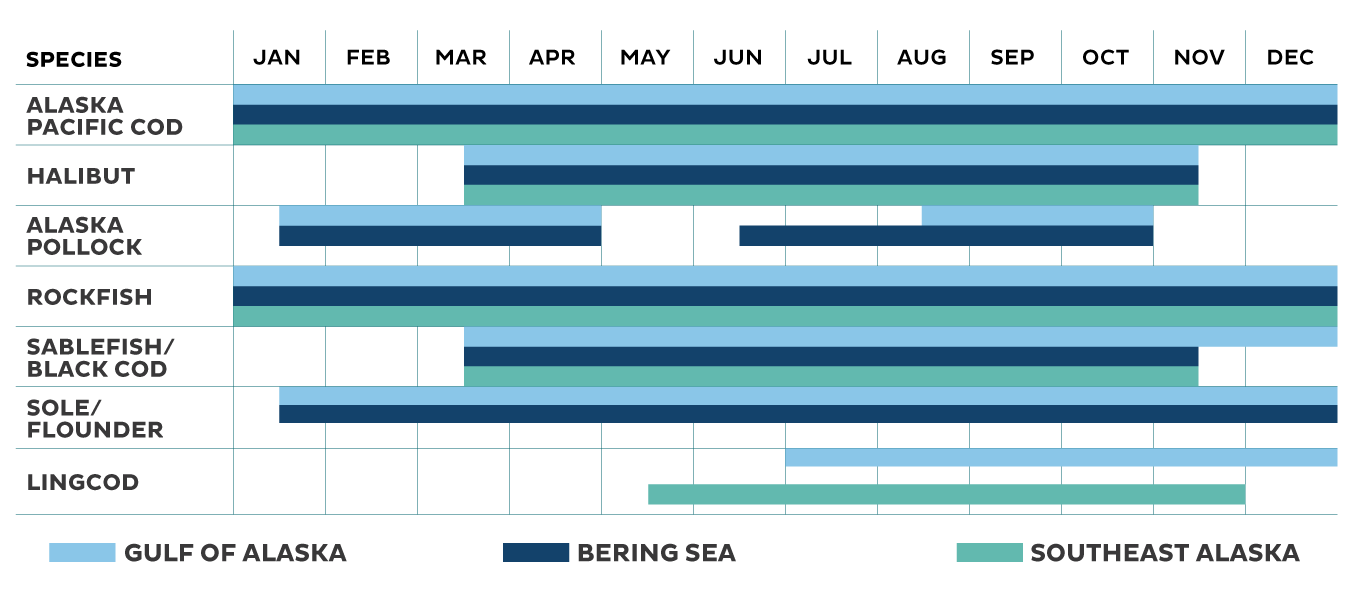
FAO 67
Most of Alaska’s whitefish species are harvested from the Bering Sea and the Gulf of Alaska located in the United Nations’ Food & Agriculture Organization (FAO) statistical catch area 67. This area supports some of the most productive fisheries in the world.
- FAO 67 (orange dot outline) – the world’s boundaries of the major fishing areas established for statistical purposes.
- Exclusive Economic Zone (light blue shading) – The Alaska Exclusive Economic Zone extends 200 nautical miles off the coastline. Within this zone, the U.S. has sovereign rights to the management of the resources.
- Continental Shelf (teal shading) – the extension of Alaska’s coast consisting of relatively shallow, productive waters. Alaska’s continental shelf comprises 70% of the nation’s total.
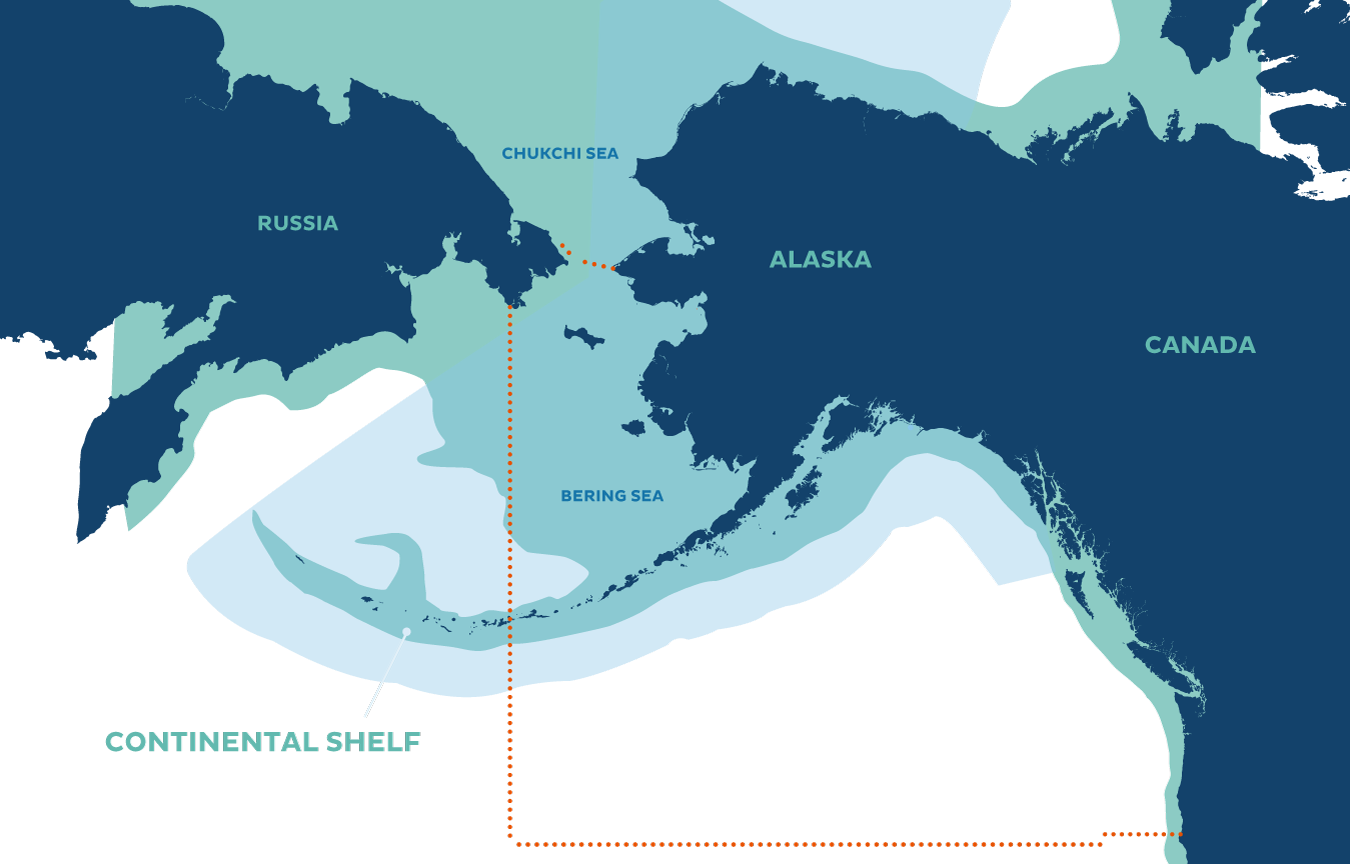
Whitefish Harvesting Methods
Alaska whitefish fishermen are dedicated to responsible catch methods, and have participated in scientific studies to avoid incidental catch of non-target species.
- Fishermen cooperate with researchers to develop modified gear that promotes bycatch reduction, improved quality and preservation of marine habitat.
- Types of commercial harvesting methods for whitefish species include pot fishing, longlining, jig fishing and varying types of trawling.
